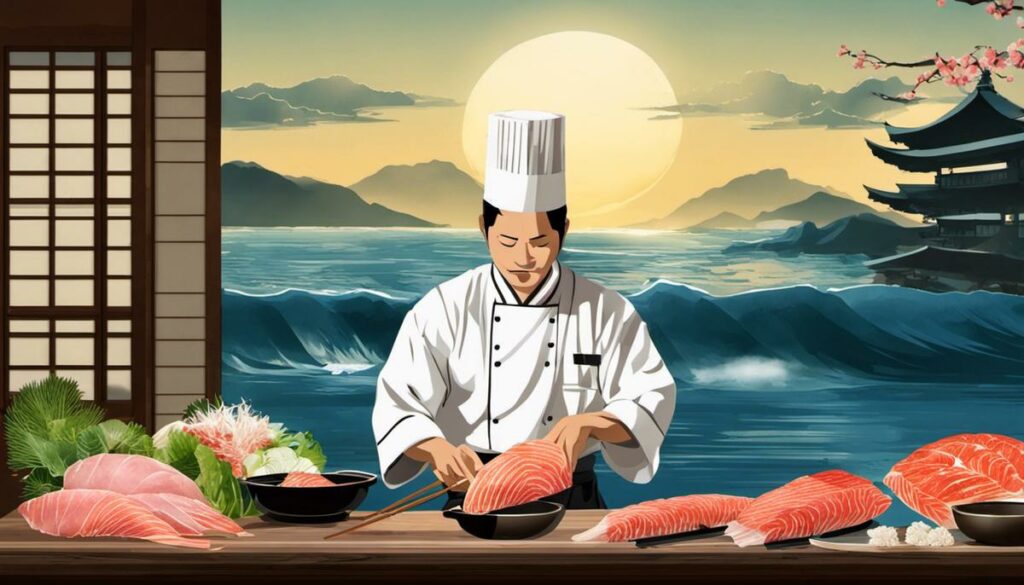The art and culture of raw fish, as embodied in Sashimi, is a fascinating subject that encompasses a plethora of dimensions and undertones. Sashimi is more than just a beautiful dish presented on a plate. It is a celebration of Japanese aesthetics, philosophy and tradition that is closely linked to the rhythm of nature and the appreciation for quality and attention to detail. Hidden in the depth of his simple presentation is a world of concepts, techniques and norms that must be discovered and understood by the sashimi lover. It is a journey that begins with the exploration of its origin and meaning, and finally reveals the real pleasure of enjoying sashimi by appreciating the taste and texture of each piece of fish.
The Origin of Sashimi
A culinary journey through the Land of the Rising Sun reveals the true origin of sashimi, one of the most famous delicacies in Japanese cuisine. Enchanting in its simplicity, sashimi is a prime example of immaculately presented, raw seafood. It’s a graceful blend of history, art, and culinary delights.
The earliest mention of sashimi, which roughly translates to “piercing the body,” dates back to the 14th century. Originally, it was cut and served in ceremonies, with the pieces of fish artfully presented on lotus leaves. This craftsmanship has been passed down from generation to generation and has become an important part of food culture in Japan.
Sashimi is so special because it focuses on the quality and freshness of the ingredients, especially the fish. Only the best and freshest seafood is used. The cut is crucial. The authentic presentation of sashimi requires years of practice and masterful skill.
So it’s no wonder that sashimi is considered a true art form in Japanese cuisine. Not only because of the impressive presentation, but also because of the variety of seafood used. From eel to tuna, there are a number of varieties that are served with different side dishes and dips.
In conclusion, there is more to sashimi than just raw fish. Each piece pays homage to both the product and the sophistication of Japanese cuisine.
Revolutionary in its simplicity, spectacular in its taste, the sashimi remains a remarkable piece of culinary art. It is a vital mix of culture, tears, joy and love of the culinary arts. After all, food should not only fill you up, but also invigorate the senses and delight the mind. That’s exactly what the Sashimi does. It’s an impressive piece of the art of living that lets us see the history, culture, and passion of the Japanese people in every bite and sip.
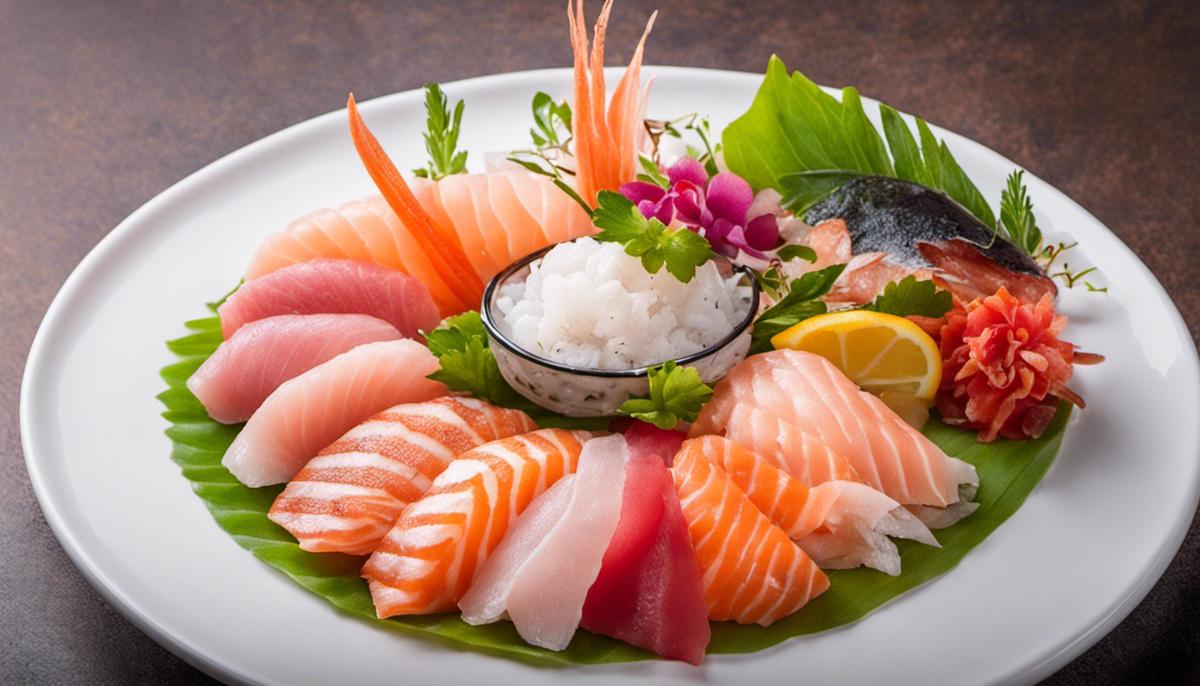
Selection of raw materials and hygiene standards
When it comes to sashimi, the choice of fish and the strict hygienic standards are crucial to optimize the flavors and textures that this exquisite dish has to offer.
First of all, it should be noted that not all fish are suitable for sashimi. Tuna, known as maguro , is always a safe choice in sashimi cuisine. It is appreciated for its mild taste and creamy texture. Aji, also known as Spanish mackerel, is also popular, offering a rich heartiness and a pleasant texture. Saba, or mackerel, offers a welcome change of pace with its robust and intense flavor, often balanced by hints of fresh citrus. Hamachi, better known as yellowtail, is a favorite for lovers of buttery smoothness and subtle flavor.
Of course, the quality and freshness of these fish is of paramount importance. This is where hygiene standards come into play. Japan, the home country of the sashimi, has particularly strict requirements for the handling of raw fish. It must be stored at very low temperatures to prevent the growth of bacteria and parasites. Some fish, such as the eel, even need to be cooked to avoid health risks. The double freezing method, in which the fish is first frozen at minus 35 degrees Celsius or lower and later thawed at minus 20 degrees , is a common practice to destroy parasites and ensure the safety of the product.
In addition to these standards, it is essential that the kitchen tools and work surfaces used to prepare sashimi are always clean and well maintained. This not only promotes safety, but also the preservation of the pure taste of the fish.
It is this combination of the right fish, the correct handling and strict hygiene standards that makes sashimi such a sought-after pleasure experience. Respect for these processes is key, both for the safety of the consumer and for the aesthetics and taste of the finished dish.
The essence of sashimi lies in its simplicity and display of the natural beauty of seafood. The care and precision that go into its preparation embody the virtue of Japanese cuisine, which aims to honor nature in its purest form. And that’s what makes Sashimi so fascinating—its ability to celebrate the freshness and tenderness of the sea so strongly, yet so perfectly.
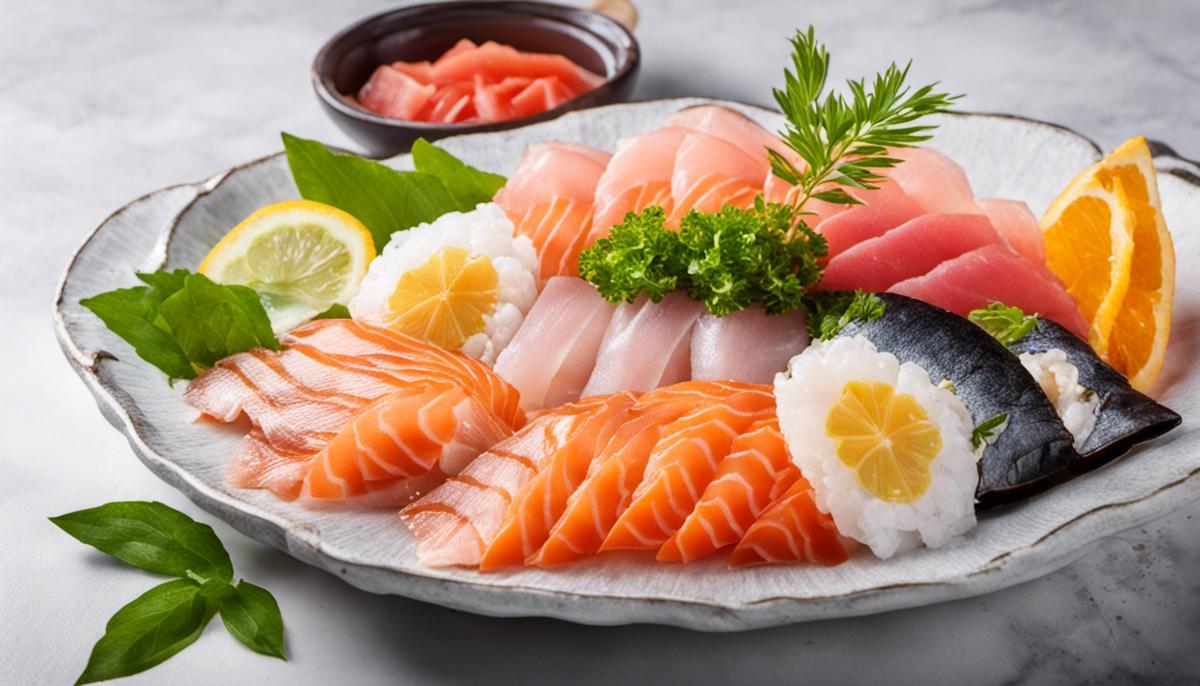
Techniques of fish cutting
The cut makes perfect: techniques for making sashimi
The preparation of sashimi requires precision, skill and respect for the product. To cut fine fish for sashimi, certain techniques are essential. The cut plays a crucial role in accentuating the texture and flavor of the fish.
The most common cutting techniques are Hira-zukuri, Sogi-zukuri, and Usu-zukuri. Hira-zukuri, also known as the “standard cut”, is the most commonly used. The fish is cut into pieces about 5 cm long, 1 cm wide and 1 cm thick. This technique emphasizes the fresh, meaty texture of the fish and is ideal for tuna or salmon.
Sogi-zukuri, or “knife cutting,” is another common technique in which the fish is cut into thin, elongated slices. This technique is great for fish with a softer texture, as it brings out their tenderness.
The third technique, usu-zukuri, also known as “thin cut”, is used for very thin slices. This fine cut is ideal for very fresh fish, such as flounder, as it emphasizes the delicacy of the fish and brings out its subtle aromas.
But choosing the right knife also plays a decisive role: Yanagiba and Takohiki are two popular types. Yanagiba is a long, slender knife that is ideal for Hira-zukuri cuts. Takohiki, with its square tip, is particularly suitable for sogi-zukuri and usu-zukuri cuts. Both knives require careful handling and regular care.
However, the cut is not everything. The attitude towards the product, the care of the tools and the proper storage of the fish are equally important to ensure the authentic, proud expression of the sashimi tradition. Because at the end of the day, it’s not just about food; it’s also an appreciation of the meticulous craftsmanship and pure, unadulterated ingredients that make sashimi such a fascinating culinary discipline. Sashimi is more than just a dish. It is an art of living, a model for a respectful approach to nature and its diversity.
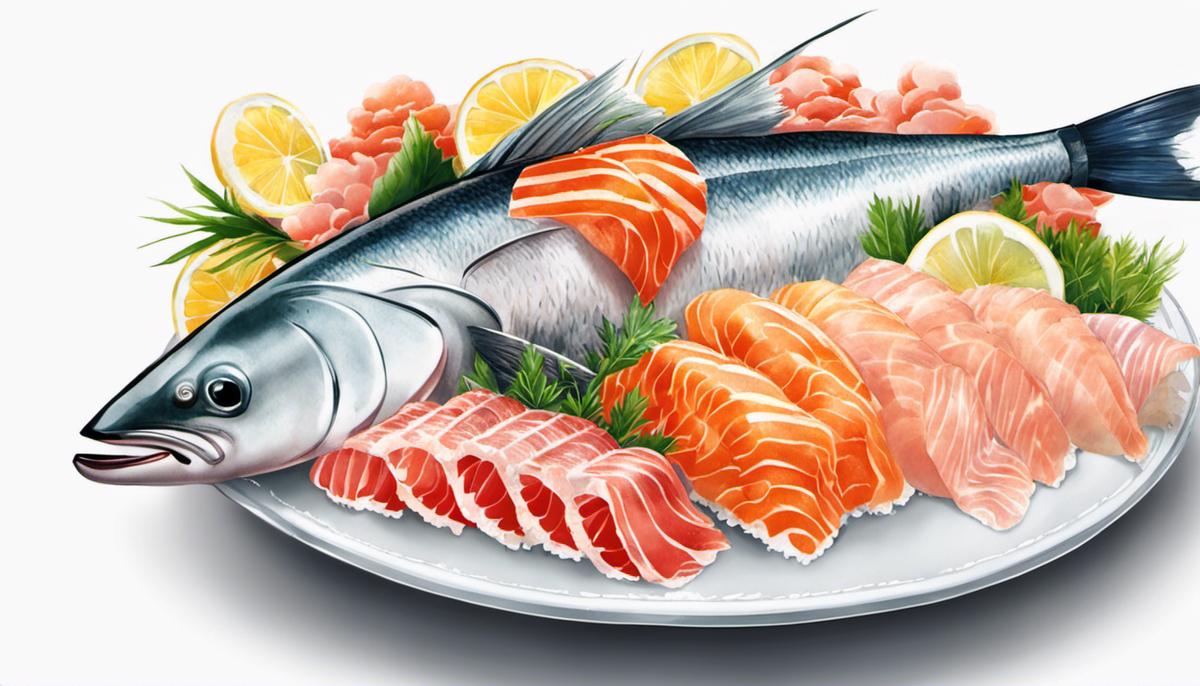
Sashimi Presentation and Side Dishes
Sashimi is much more than just a puristically prepared dish. It is an artful performance that requires a high level of expertise and excellent culinary skills. The beauty of this dish lies in the respectful handling of the ingredients and the necessary precision and care in cutting and serving. But how to present sashimi in an appealing way and which side dishes fit best?
When preparing sashimi for your guests, an important aspect besides the freshness and quality of the fish is how the dish is visually presented. The fish is usually served on a concrete or wooden plate . A carefully coordinated, aesthetic presentation through the use of fresh fruit and vegetables, such as citrus fruits, cucumbers or radishes, can enhance the appearance of the dish enormously. Beautifully presented on a bed of ice, along with wasabi, ginger and soy sauce, sashimi reflects the full spectrum of Japanese cuisine.
The ideal accompaniment to sashimi are vegetal flavors that complement the pure, fresh flavor of the fish without masking it. A slice of lemon, fresh ginger or a pinch of wasabi are the classic accompaniments. They serve not only as natural flavor enhancers, but also as natural digestive aids. Sashimi can also be supplemented with crunchy lettuce leaves, radishes and carrot sticks .
When it comes to harmony on the plate, Sashimi also follows the principle: less is more. Each ingredient has its own flavor, which should not be overloaded with flavors that mask the natural flavor of the fish.
In addition to the sashimi, nori leaves, rice and miso soup are often served. Rice helps neutralize the palate and prepares it for the next taste. If the sashimi serves as the main course, a warm miso soup at the beginning of the meal is a good idea. The salty, warming aroma acts as an appetizer and prepares the palate for the enjoyment of fish.
So, at its core, sashimi is an ode to the purity of taste. It’s a minimalist dish that still offers maximum depth of flavor. The aesthetic presentation and the chosen side dishes can help to deepen this experience and perfect the enjoyment. In this respect, sashimi is a unique example of Japanese cuisine, which draws its inspiration from nature and gives each food its own, unadulterated stage.
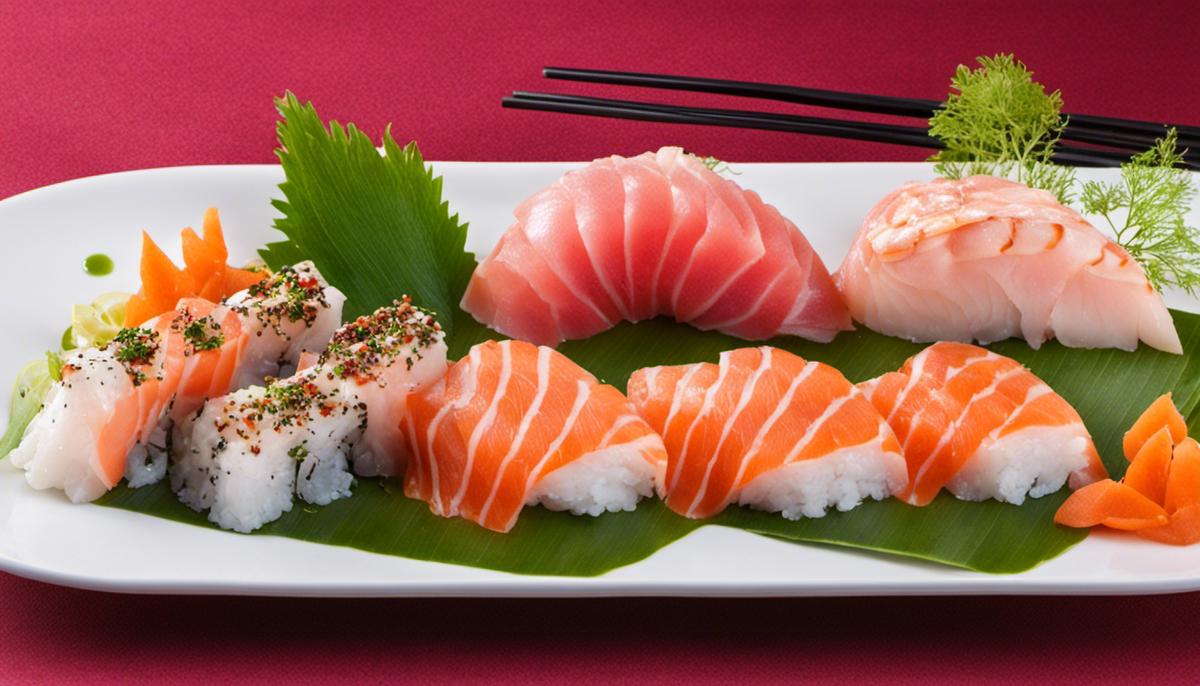
How to make sashimi at home
As we delve deeper into the creative and culinary process of making sashimi, it’s imperative to mention the art of visual presentation. Sashimi focuses not only on flavor and texture, but also on an aesthetic representation that is as vibrant and diverse as marine life itself. After all, the eye is at the table and it brings to life the carefully cut and placed, raw seafood resting on the plate.
Just like the simplicity and beauty of the cutting techniques for sashimi, the visual presentation also reflects the respect for the product and emphasizes its natural beauty. Whether presented minimalistically on a single sheet of shiso (a bold Japanese herb) or artfully arranged on a bed of finely chopped daikon (Japanese white radish), each presentation aims to enchant the eye and delight the mouth.
Equally important is the choice of side dishes for sashimi. Soy sauces prove to be indispensable here. They create a harmonious taste experience and underline the taste of the fish instead of masking it. The result is a pleasant, balanced palate. Fresh wasabi, with its subtle spiciness, helps to intensify the flavor of the seafood without drowning it out. Gari, or pickled ginger, cleanses the palate and thus facilitates the perception of the subtle differences between the types of fish.
Additional dishes that are often served alongside sashimi, such as nori seaweed sheets, rice, and miso soup, provide the perfect counterbalance to the coolness and smooth texture of the sashimi. They help to bring even more variety to the already breathtaking taste experience.
At the end of the day, sashimi is a celebration of the purity of taste. Japanese cuisine draws its inspiration from nature and highlights the natural properties of the ingredients. By minimally processing the fish and by omitting spices, you get a culinary experience that lives up to its name and brings out the true taste of the sea.
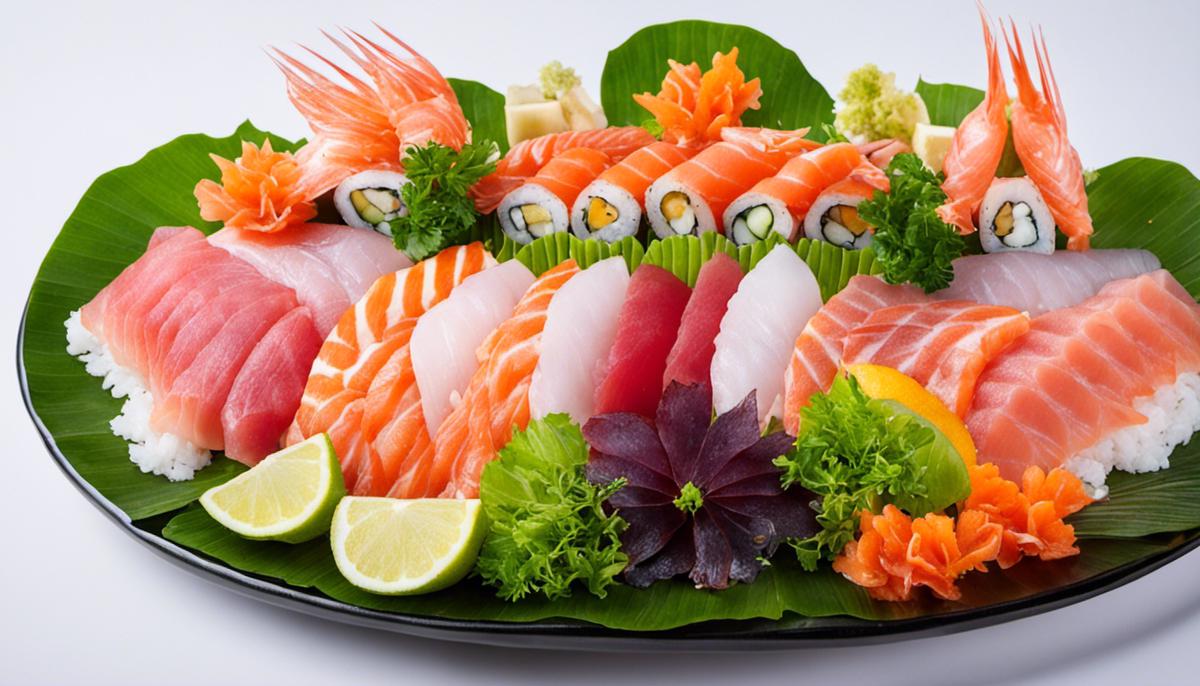
The real beauty and fascination of sashimi lies in its simplicity and pure appreciation of the central ingredient – the fish. The subtle art of selecting, preparing and presenting a fish opens up a new world of sensory experience and understanding. The different aspects we have discussed here, from understanding the origin and role of sashimi in Japanese culture, to the rigorous selection of raw materials and mastery of cutting techniques, to creative presentation and finally preparation at home, are steps on the way to mastering this art. But it is also a continuous process of learning and discovery, which should be paired with respect and dedication. In this sense, sashimi remains a deep source of inspiration and joy – a symbol of the diversity and magic of Japanese cuisine.
